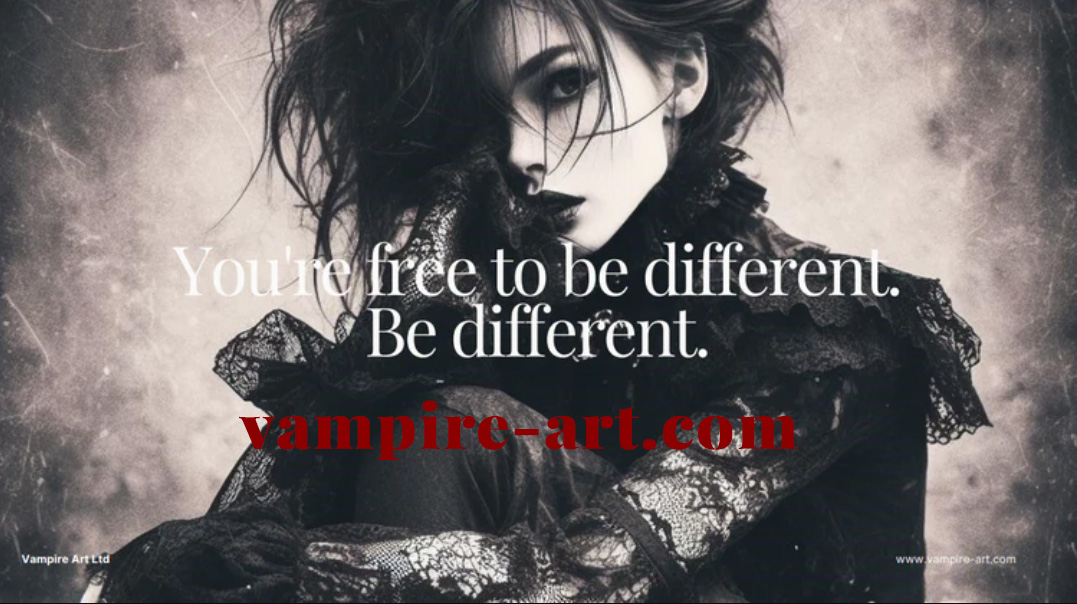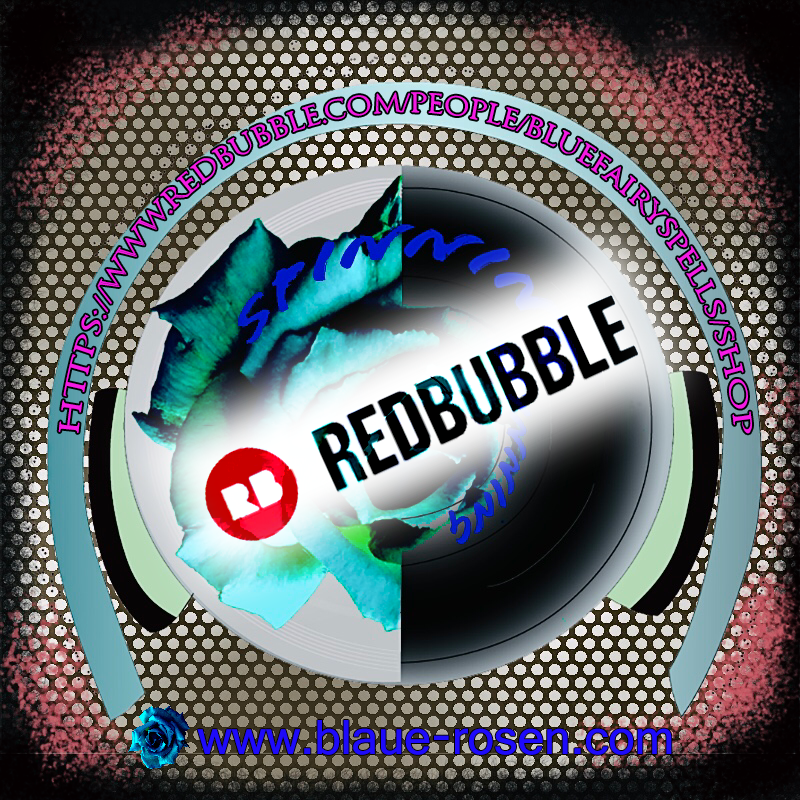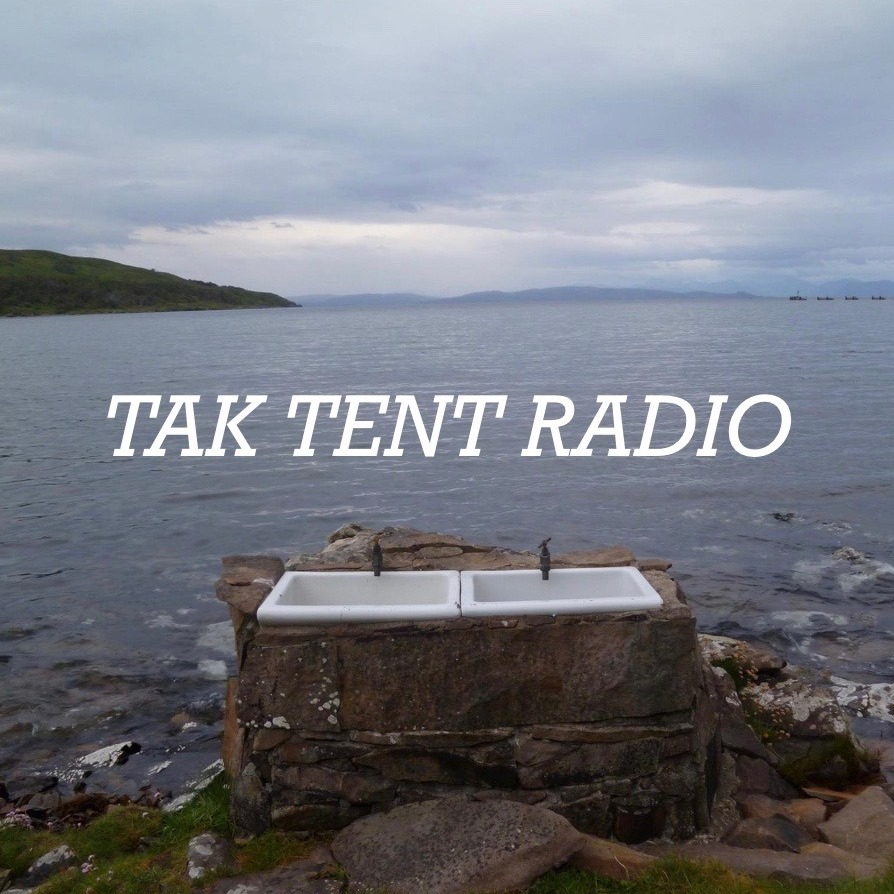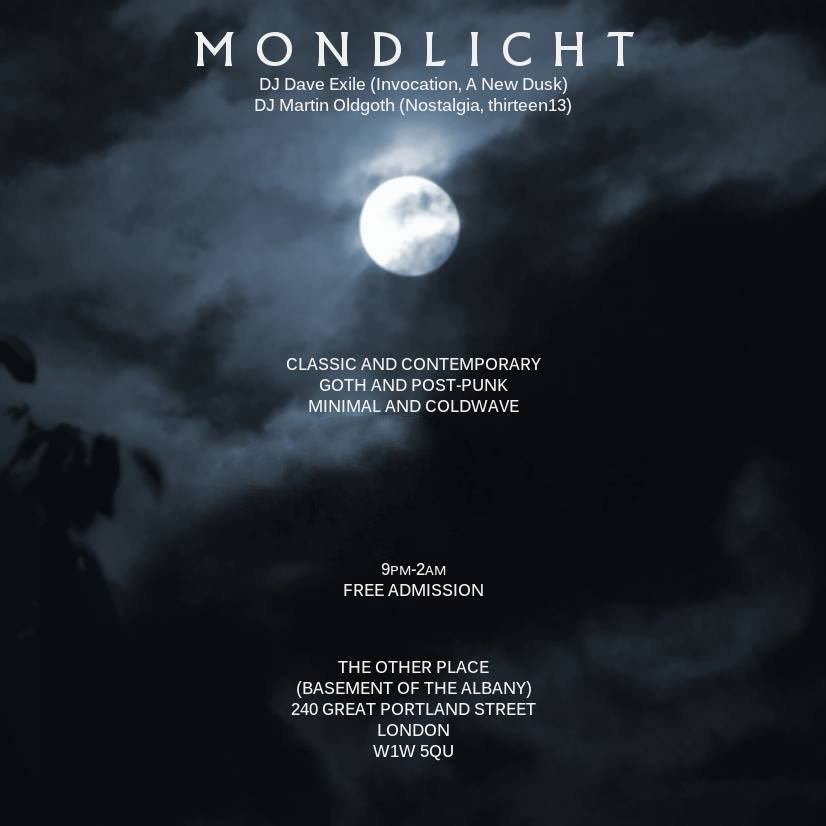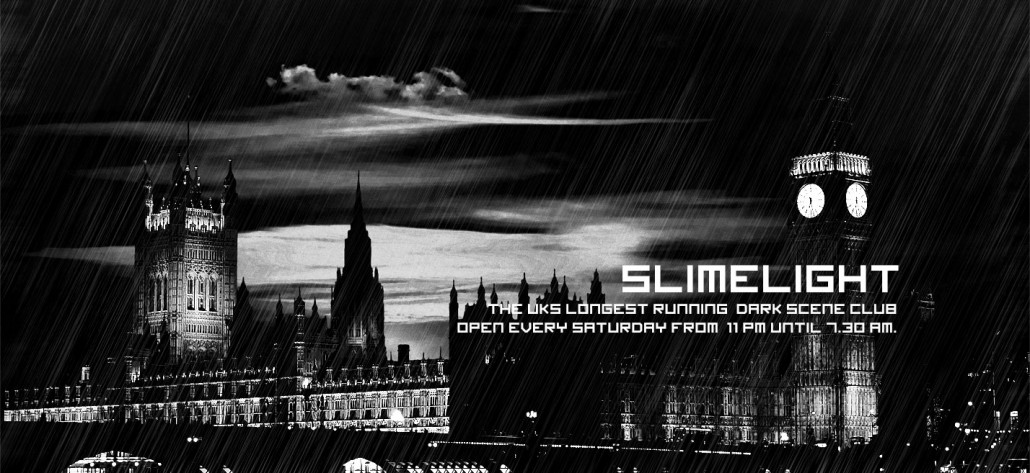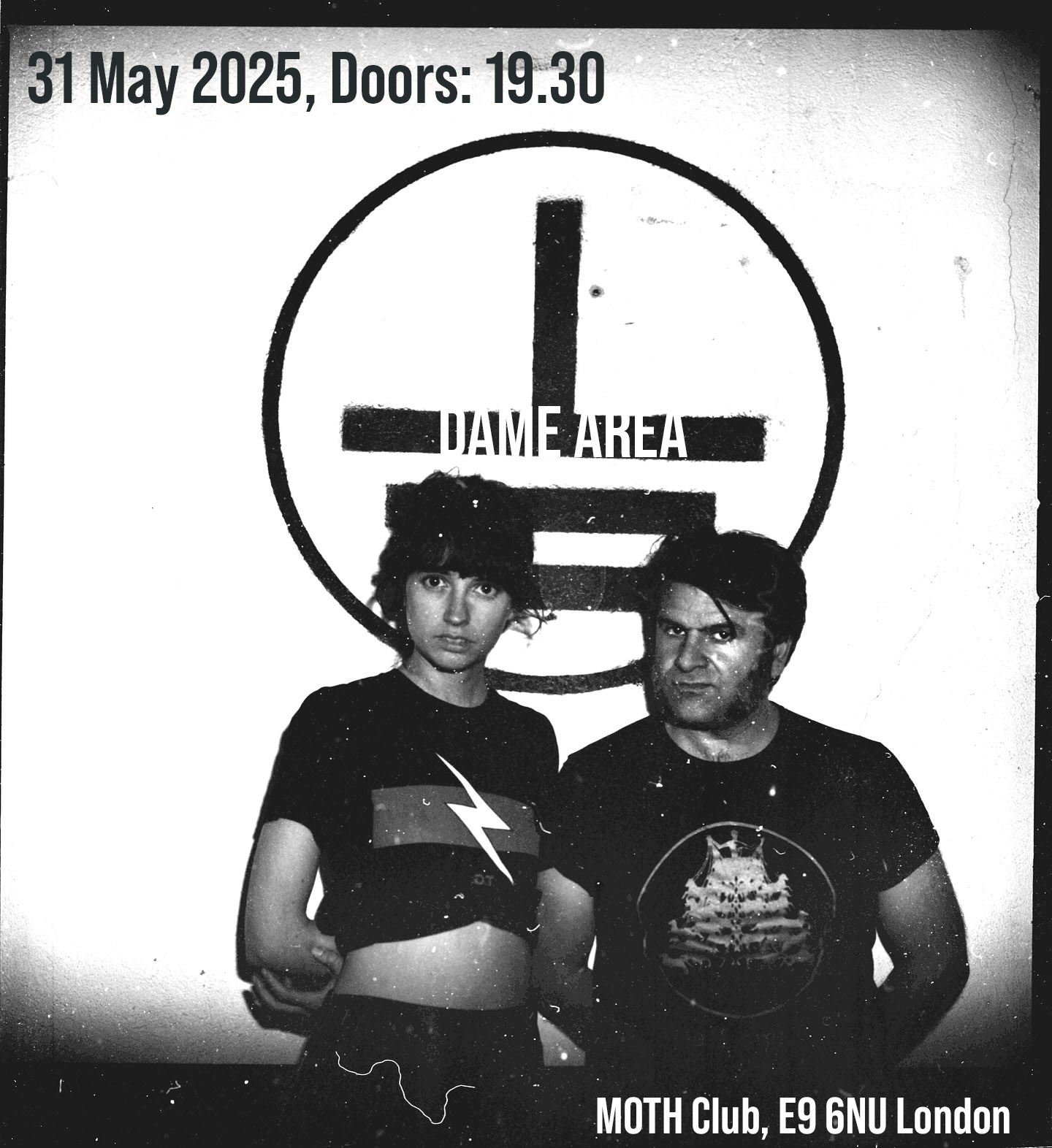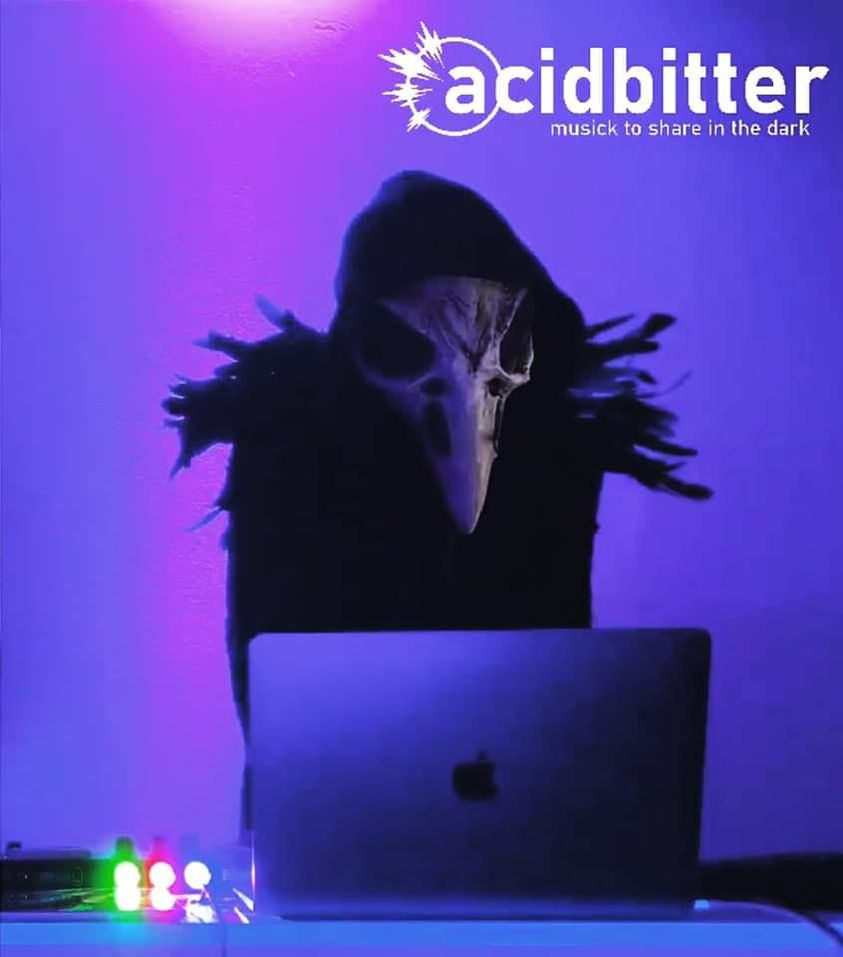The dilemma of whether to listen to electronic music sitting down in an environment with good acoustics or standing and dancing in an environment with not so great acoustics, will remain unresolved. But what is certain, is that once you get to listen to electronic music with great acoustics, this dilemma will puzzle you no more.
I cannot possibly know how each of the 1942 people who filled Barbican Hall have got to know Alva Noto but I can share how I learned about him. It was when George Drivas, one of my favourite DJs, included Alva Noto’s song “Chapitre VII: Back In Town” in one of his beautiful 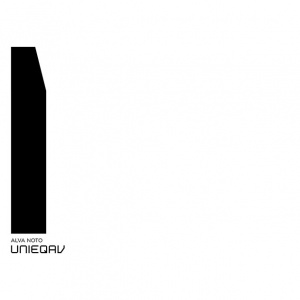 setlists in Athens club Dark Sun. The fact that I first listened to Alva Noto in a club environment and now I was listening to him live in a theatre, created a very informative experience. Of course the club environment I am describing could not be further away from what most of the people have experienced, as Dark Sun is not an ordinary club but a truly immersive experience. But enough about that, Alva Noto a.k.a Carsten Nikolai is a former student of Architecture and a multifarious artist who does much more than writing music. I have always admired multidisciplinary artists who surpass the limits of their medium, in this case music. Audiences have had the chance to admire the work of Alva Noto in various occasions in London, as he created a light/sound installation at Siobhan Davies’ studio in 2010, he has designed the print that was placed on the surfaces of a fence in the Olympic park in 2011, he has presented a light/sound installation entitled unicolor, at The Vinyl Factory in 2015 and since 2001 he has had a constant presence in the cultural/artistic activity of London among other cities and countries. Even though his latest pieces focus on the combination of light with sound, Carsten Nikolai has also created more cryptic and ‘introverted’ works of art such as ‘void 30hz (7bit, 9bit,11bit)‘, which focused on the materiality of sound. This piece, consisted of chrome plated glass tubes that contained sounds. Considering all this, it is evident that each performance of his is another instance of his artistic personality and another way for exploring sound and its properties.
setlists in Athens club Dark Sun. The fact that I first listened to Alva Noto in a club environment and now I was listening to him live in a theatre, created a very informative experience. Of course the club environment I am describing could not be further away from what most of the people have experienced, as Dark Sun is not an ordinary club but a truly immersive experience. But enough about that, Alva Noto a.k.a Carsten Nikolai is a former student of Architecture and a multifarious artist who does much more than writing music. I have always admired multidisciplinary artists who surpass the limits of their medium, in this case music. Audiences have had the chance to admire the work of Alva Noto in various occasions in London, as he created a light/sound installation at Siobhan Davies’ studio in 2010, he has designed the print that was placed on the surfaces of a fence in the Olympic park in 2011, he has presented a light/sound installation entitled unicolor, at The Vinyl Factory in 2015 and since 2001 he has had a constant presence in the cultural/artistic activity of London among other cities and countries. Even though his latest pieces focus on the combination of light with sound, Carsten Nikolai has also created more cryptic and ‘introverted’ works of art such as ‘void 30hz (7bit, 9bit,11bit)‘, which focused on the materiality of sound. This piece, consisted of chrome plated glass tubes that contained sounds. Considering all this, it is evident that each performance of his is another instance of his artistic personality and another way for exploring sound and its properties.
At this point I feel I should praise Barbican’s professionalism and promptness in everything that concerned this gig. This was not the first time I have attended a concert at The Barbican of course, but this one had a little extra. Stage times, were, as always fully respected, the sound engineer was not addressed by either Alva Noto or Anne-James Chaton and the staff was more than helpful with everything.
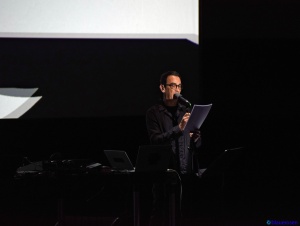 Anne-James Chaton opened the evening with a minimal, almost mechanical performance, whose black and white visuals, brought to mind the minimalist planes of Modrian and the mood of René Magritte’s paintings.
Anne-James Chaton opened the evening with a minimal, almost mechanical performance, whose black and white visuals, brought to mind the minimalist planes of Modrian and the mood of René Magritte’s paintings. 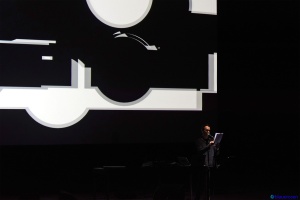 Listening and seeing Anne-James Chaton for the first time live, has made clear that his voice is merely a transmitter of energy and rhythm and not a medium for singing in the ‘traditional’ sense. One could either let one’s mind follow the rhythmic pulse that he was creating with sound or lose the whole point of the musician’s stage appearance.
Listening and seeing Anne-James Chaton for the first time live, has made clear that his voice is merely a transmitter of energy and rhythm and not a medium for singing in the ‘traditional’ sense. One could either let one’s mind follow the rhythmic pulse that he was creating with sound or lose the whole point of the musician’s stage appearance. 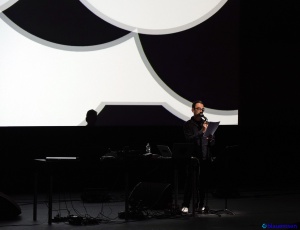 In an act of improvised ritual, he was holding a different piece of paper for each song, whose white color, matched his white shoes and contrasted with his black outfit replicating the aesthetics of the visuals that were projected on the screen. In a similar improvised act of feverish ‘negation’ he threw this piece of paper on the floor at the end of each song. He did not use a portable megaphone this time, as he has done in past performances, but his show was equally dynamic without it.
In an act of improvised ritual, he was holding a different piece of paper for each song, whose white color, matched his white shoes and contrasted with his black outfit replicating the aesthetics of the visuals that were projected on the screen. In a similar improvised act of feverish ‘negation’ he threw this piece of paper on the floor at the end of each song. He did not use a portable megaphone this time, as he has done in past performances, but his show was equally dynamic without it.
Alva Noto-Unieqav: A multisensory experience
Notes usually have an oval shape and a little tail or line through them, to non-musicians they have the same meaning as any symbol. Some artists just read them as they appear on a score and assign emotion to their duration, others give spatial or graphic properties to them and some are just inspired by their incomprehensible and rich meaning. 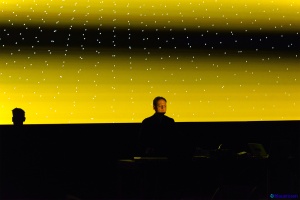 Alva Noto is inspired by additional properties of notes and sound in general. He plots and colours their waveforms and somehow he is letting them spatially arrange themselves freely, in an attempt to visually represent some of their inherent and ‘invisible’ dynamics.
Alva Noto is inspired by additional properties of notes and sound in general. He plots and colours their waveforms and somehow he is letting them spatially arrange themselves freely, in an attempt to visually represent some of their inherent and ‘invisible’ dynamics.
“ For Uni, the idea was always to do three records sitting in between experimental music and club music. I was diving more into rhythmic concepts. If you listen to UNIEQAV, it’s between rhythmic music you can listen to at home or in a club; sitting between these situations…” (Alva Noto, extract from an interview)
His music during the live performance, was quite the opposite of his stage appearance. He was strict, composed, quite distant,almost unresponsive to the sound. Each track through the rich dynamics of its rhythms, seriously tested the limits of my composure, as I found it 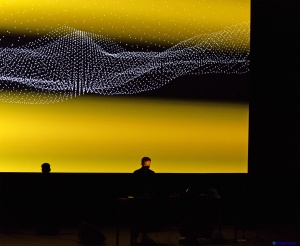 increasingly difficult to remain seated while these beautiful rhythms clearly ‘asked’ me to dance to them (especially the second half of ‘Uni Mia‘, ‘Uni Normal‘ and ‘Uni Mic B‘)! Still, apart from two other people who seemed to feel a similar energy boost as me, everyone else around me stayed surprisingly still in their seats… After getting over the initial fascination with the aesthetics, the colours and the ‘movement’ of the visuals, I managed to ‘enter’ their realm and follow the energy and the flow of the amazing music of ‘Unieqav‘. I really loved the fact that the visuals had both a mathematical component (Carsten Nikolai has always been fascinated by the scientific as well as the artistic representation of frequencies) and an aesthetic one. Throughout the show, there were strings of sound frequency plots, that were moving together as one dynamic and n-dimensional object whose ‘pulse’ was disturbed according to the rhythmic changes that happened during each track.
increasingly difficult to remain seated while these beautiful rhythms clearly ‘asked’ me to dance to them (especially the second half of ‘Uni Mia‘, ‘Uni Normal‘ and ‘Uni Mic B‘)! Still, apart from two other people who seemed to feel a similar energy boost as me, everyone else around me stayed surprisingly still in their seats… After getting over the initial fascination with the aesthetics, the colours and the ‘movement’ of the visuals, I managed to ‘enter’ their realm and follow the energy and the flow of the amazing music of ‘Unieqav‘. I really loved the fact that the visuals had both a mathematical component (Carsten Nikolai has always been fascinated by the scientific as well as the artistic representation of frequencies) and an aesthetic one. Throughout the show, there were strings of sound frequency plots, that were moving together as one dynamic and n-dimensional object whose ‘pulse’ was disturbed according to the rhythmic changes that happened during each track. ‘Hisses’, brief or longer ‘blasts’ , distorted ‘muffled’ sounds, thin sounds and full bodied industrial sounds, brief high pitched notes and continuous sounds that were being perceived as rolling pebbles, triggered these waveforms. At the end of each track, these entangled strings formed perfectly parallel, perfectly straight lines. Throughout the show, the strings might have been moving as one but they were also, clearly, a ‘multiple’. The duration of each rhythmic pulse made all of them and each of them individually, move forward in a continuous way, vibrate on the spot or even reach upwards. The psychedelia was enhanced further when these strings were being divided in ways that formed pathways through them, thus creating 3d-space and making us think that these otherwise two dimensional sine graphs have a fourth dimension apart from time, length and ‘height’. It was tempting and enjoyable, to imagine oneself being part of this graph, surrounded by these sharp vibrating lines and ‘travelling’ in the spaces between them. Later in the set, towards the end, these thin lines became moving planes with colour, changing our perception of them and of our surroundings I might admit, once again.
‘Hisses’, brief or longer ‘blasts’ , distorted ‘muffled’ sounds, thin sounds and full bodied industrial sounds, brief high pitched notes and continuous sounds that were being perceived as rolling pebbles, triggered these waveforms. At the end of each track, these entangled strings formed perfectly parallel, perfectly straight lines. Throughout the show, the strings might have been moving as one but they were also, clearly, a ‘multiple’. The duration of each rhythmic pulse made all of them and each of them individually, move forward in a continuous way, vibrate on the spot or even reach upwards. The psychedelia was enhanced further when these strings were being divided in ways that formed pathways through them, thus creating 3d-space and making us think that these otherwise two dimensional sine graphs have a fourth dimension apart from time, length and ‘height’. It was tempting and enjoyable, to imagine oneself being part of this graph, surrounded by these sharp vibrating lines and ‘travelling’ in the spaces between them. Later in the set, towards the end, these thin lines became moving planes with colour, changing our perception of them and of our surroundings I might admit, once again.
We listened to ‘Unieqav’ at its entirety and as much as I personally quietly hoped for a special performance of the older ‘Chapitre VII: Back In Town‘ with Anne-James Chaton, this did not happen. After a persistent applause, Alva Noto came out on stage and he was joined by Anne-James Chaton for the performance of the uniquely dynamic ‘Uni DNA‘ from the album, before ending the performance with ‘Uni Edit‘, ‘Uni Tra‘ and ‘Uni Chord‘.
While the previous solo album of Alva Noto ‘Xerrox Vol.3‘ (part of the ‘Xerrox’ series), had a rather dark ambient and contemplative energy 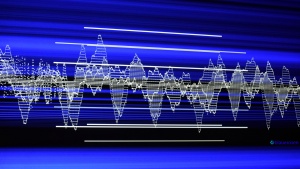 which could have been experienced if one was left alone in the room with Rodin’s ‘Thinker’, ‘Unieqav’, the third in the ‘Uni’ series of albums (‘Unitxt’ was released in 2008 and ‘Univrs’ in 2011) is a more dynamic album. Even though ‘Xerrox Vol.3’ favours stillness and the experience of the moment in all its complexity, ‘Unieqav’ has a ‘lighter’ emotional charge and feels as the sonic equivalent of the numerous little dots that can be found in a pointillist painting.
which could have been experienced if one was left alone in the room with Rodin’s ‘Thinker’, ‘Unieqav’, the third in the ‘Uni’ series of albums (‘Unitxt’ was released in 2008 and ‘Univrs’ in 2011) is a more dynamic album. Even though ‘Xerrox Vol.3’ favours stillness and the experience of the moment in all its complexity, ‘Unieqav’ has a ‘lighter’ emotional charge and feels as the sonic equivalent of the numerous little dots that can be found in a pointillist painting.
A few days after the show I keep listening to ‘Unieqav’ through my headphones and continue to enjoy it because Alva Noto presented it in this specific way during his live performance, accompanied by these conceptually complex and psychedelic visuals.
“There was a period where a lot of people asked me what kind of speakers they should listen to my music on. I’m not going to give recommendations as it should work on everything; that’s a part of the mastering process… I always say if the mastering works in the car then it works everywhere. It’s definitely one of the best places you should test your CD. I always test in my car before mastering even, to see how the mixes sound. When you have a long drive you have plenty of time so you can see what works…” (Alva Noto, extract from an interview)
You can see more photos from this show here: https://blaue-rosen.com/alva-noto-anne-james-chaton-live-at-the-barbican-2018/
